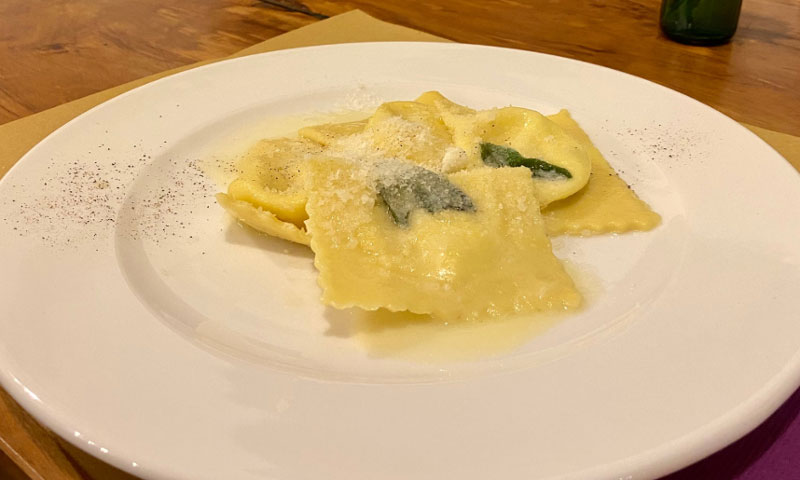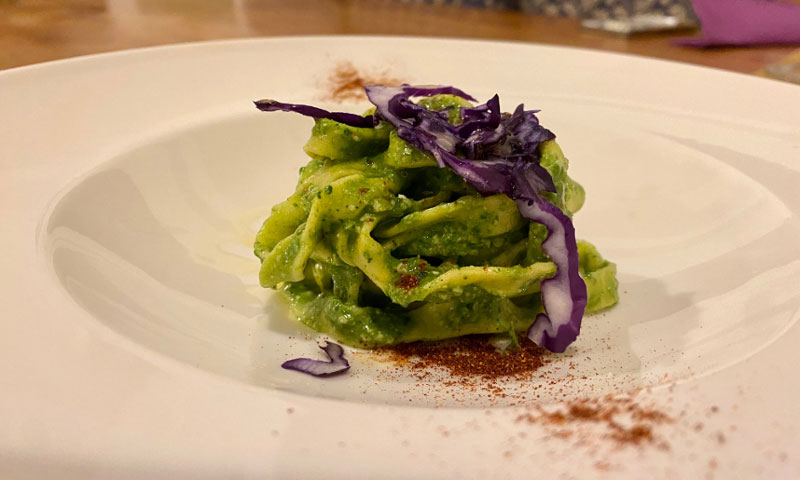Anyone Can Cook!
The history, culture, and art of Italian cuisine
M.A. in Political Science, European Union Policy Studies
By Francesca Ragonese
As an Italian American woman, the kitchen is the heart of my home. Cooking and sharing meals with my family was a significant part of my upbringing and is something I hold near and dear to my heart. Both of my parents have taught me everything I know about cooking, baking, and the expression of love for others through a home cooked meal. Living in Italy, I wanted to take the opportunity to learn more about the history and culture of some of my favorite dishes in their place of origin. So, last month I took a four-course pasta making class at the Florence Food Studio, located near Piazza Santo Spirito in Florence, Italy.
The Florence Food Studio offers several different cooking and pastry-making courses throughout the week, instructed by Chef Giorgio Pinto. In these courses Giorgio puts a particular emphasis on using local ingredients, not only to support local farmers and businesses but also to give participants a taste of the local community. This session began with a brief aperitivo where Giorgio taught us about the origin of pecorino cheese from sheep’s milk rather than cow’s, and about the different flavor profiles between Tuscan prosciutto and Parma ham, which tends to be sweeter. After the aperitivo we got down to business and started preparing the main courses and dessert.
It all started with making the pasta from scratch. From a blend of wheat and semolina flour and one egg, we began mixing the dough first with a fork and then by hand until it reached a uniform consistency. If the dough sticks to your hands too much it likely needs more flour, but if it is crumbling then it needs more egg or water to bind the ingredients together. A final test of the consistency is done by pressing the dough ball with a thumb and observing how well it bounces back – elasticity is a good sign. We then put the dough aside to rest while we prepared the ingredients to make two different dishes: pear and pecorino ravioli in a sage butter, and tagliatelle in a kale pesto. Acting as Giorgio’s sous-chefs, we prepared the ravioli filling by finely chopping a pear and some pecorino cheese and then incorporating it with ricotta and olive oil for binding and salt, pepper, and nutmeg for seasoning. While we prepared this filling, Giorgio prepared the kale pesto by blanching the kale to soften it and reduce its bitterness and later blending it with chopped walnuts, garlic, pecorino, olive oil, salt, and pepper.

We also prepared a local Tuscan dish as a starter which consisted of crushed tomatoes, stale bread and other ingredients for taste, commonly known as pappa al pomodoro. To ensure the correct consistency it is important that the bread is stale and not fresh because stale bread has a stronger capacity to absorb the tomato and create a stew-like consistency. This dish is something I had frequently seen on menus in Florence, and because of the Spanish word for potato (papa) I had always assumed it was a dish with potatoes and tomatoes. Giorgio explained that pappa means “baby food,” and this is reflected in the stewy, pulverized consistency of the dish. When it came time to serve this dish, Giorgio topped it with mozzarella di bufala campana (buffalo mozzarella), olive oil, and grated dried olives. Though I was skeptical about this dish and had never considered ordering it before, it was absolutely delicious and is now on my radar for the next time I get dinner out in Florence.

Before getting back to preparing the pasta dishes we prepared some tiramisù for dessert. Tiramisù, a common Italian dessert, consists of layers of coffee soaked biscuits and creamy filling, and is topped with a dusting of cocoa powder. To prepare the cream, we first had to separate the yolks from the egg whites, then whip the egg whites until they were foamy and form soft peaks. Simultaneously, we combined the yolks with white sugar until they formed a smooth, silky consistency. Lastly we combined the yolks and sugar with mascarpone cheese and then folded this mix into the egg whites until we were left with a light, sweet cream. Layer by layer, we delicately soaked the lady fingers in espresso and rum, piped on a layer of the cream, and dusted on cocoa powder until each cup was full and ready to chill in the refrigerator. The name tiramisù, meaning “pick me up,” captures the nature of the dessert well as the coffee, alcohol, and sugar provide a nice kick of energy after a big meal.
While the tiramisù chilled we stretched, shaped and cut the pasta dough to prepare for the two main courses. Giorgio carefully demonstrated how to roll out the dough and walked us through how to put it through the pasta maker to get a smooth, flat sheet. Using half of the dough we cut out a rectangle, placed dollops of the ravioli filling two fingers length apart, and then folded the dough over. Carefully, we pressed the dough together around the dollops, starting from the sides and then moving to the middle to ensure the filling did not spill out. We used the pasta maker to cut the other half of the dough into tagliatelle, a long and flat pasta that gets its name from the way it resembles ribbons. Both types of pasta were then lightly covered in semolina flour to prevent them from sticking together, and were then taken into the kitchen to be prepared by Chef Giorgio. I sat and chatted with the two other participants while Giorgio prepared and served us each dish.

As I ate and conversed with the other participants I reflected on this experience and what I had learned from it, both inside and outside of the kitchen. Overall, I learned so much about the culture, language, and history of Italian cuisine which has helped me to gain a deeper appreciation for the artform that it is. Additionally, I learned that cooking is an art form that transcends all languages. Though one of the participants did not speak any English or Italian, she was able to participate simply just by watching Giorgio’s demonstrations and following along. This woman, originally from South Korea, even taught us how to shape dumplings with the leftover pasta dough, without uttering a word besides “dumpling.” Throughout the course, Giorgio also made it clear that you do not need to have an industrial kitchen to make a delicious meal. Though making some things by hand takes a bit more work, anyone with basic utensils and skills can do it if they try. These experiences solidified my belief that, as popularly quoted from the Disney film Ratatouille, “anyone can cook!”
I had a wonderful experience taking this course at the Florence Food Studio with Chef Giorgio, and hope to have an opportunity to take another course in the future!
Francesca Ragonese is an EUPS student pursuing the Economic and Social Policy track and the EUPS program’s Communications and Recruitment Graduate Assistant. In May of 2022, she received her Bachelor of Arts from JMU in International Affairs, with a concentration in Global Human Development and a minor in Sociology. After graduation, Francesca hopes to pursue a career in the non-profit sector, particularly focusing on international development.
